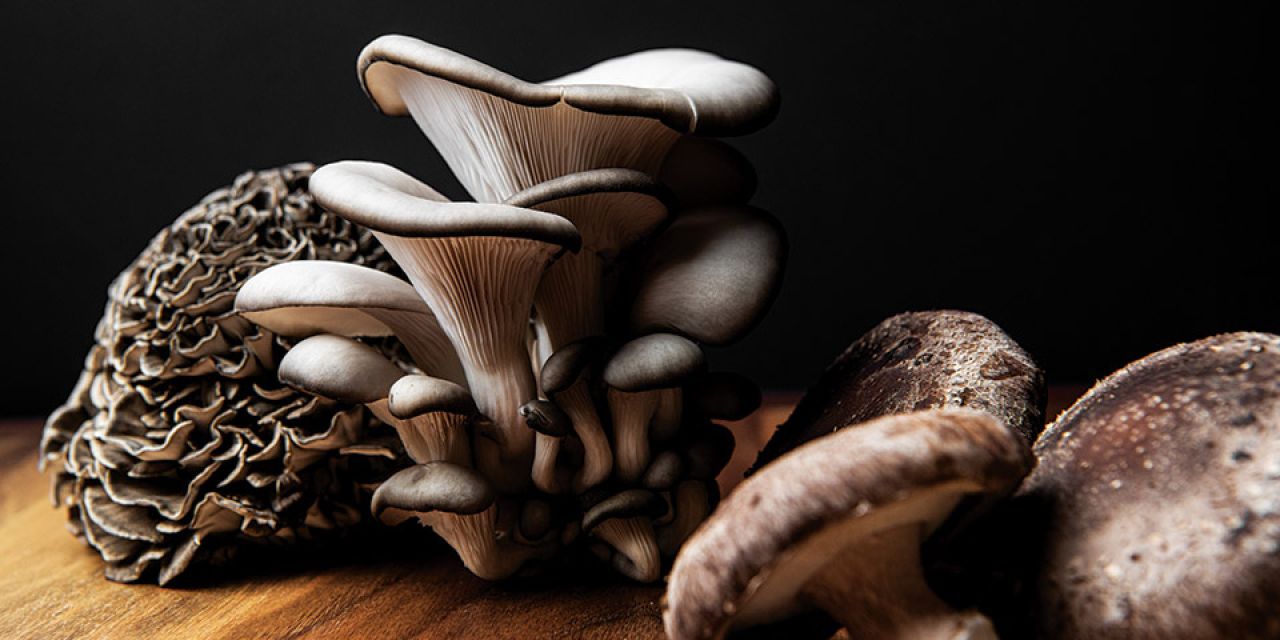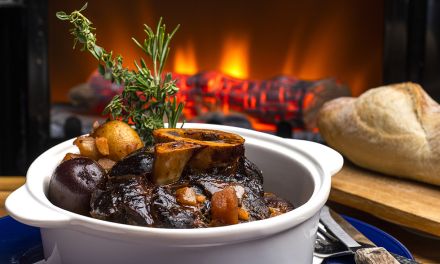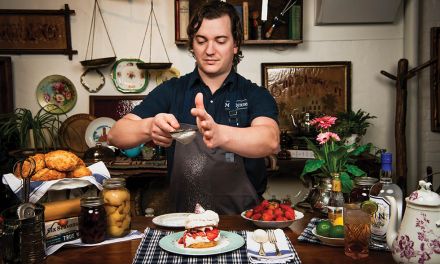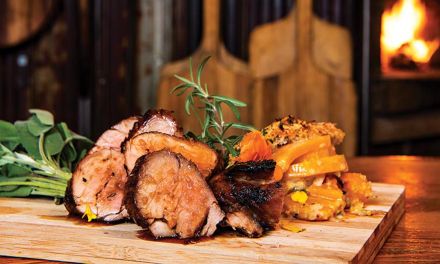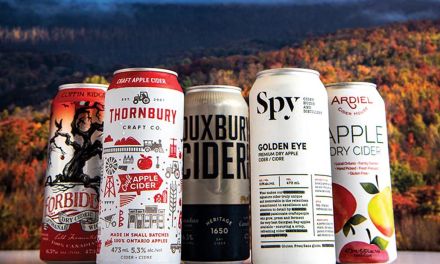Magic, Mysterious, Mushrooms
by Marcia Masino | photography by Clay Dolan
From culinary delights to mystical lore, mushrooms walk the line between delicious and dangerous.
A frosty winter evening: the doorbell rings, and you eagerly open it. The aroma of hot pizza wafts toward you, carried by the cold air, enveloping you in a special northern climes olfactory Canadian winter experience. You can taste and smell it even before you open the box. There’s only one question to ask: “Does it have the mushroom topping I ordered?”
Mushrooms play a starring role in many memorable cold-season meal experiences. Romantic fireside mushroom soup— steamy, creamy, and herbaceous—is a lunchtime favourite. The wait for tempura-battered mushrooms to cool so you can eat them like popcorn at your favourite Asian café. Sophisticated dinners where they have a supporting role, perched on top of your steak, or swimming in gravy slathered on a hearty jägerschnitzel (hunter’s schnitzel).
Popular for breakfast, mushrooms are a key ingredient in special quiches and impressive guest-worthy omelettes. Mushrooms on toast can be served for any meal. They are best friends with risotto and tomato sauce, bringing out the best in ragùs and stews. Invited to fancy parties as warm appetizers, chefs dress them up with savoury breadcrumbs and aromatics.
Their popularity extends into the agricultural world. Fifty percent of mushroom farms in Canada are located in Ontario, where they’re grown year-round. Supermarkets, grocers, and farmers’ markets source them from local growers in the Collingwood region as well as other parts of the province. Chances are, if there’s a mushroom on your plate, it’s from Ontario.
According to Statistics Canada’s Mushroom Growers’ Survey 2023 (released in 2024), Canadian mushroom growers sold 155,191 short tons of mushrooms in 2023—up 1.2% compared with 2022 and marking the eighth consecutive annual increase. Total production in Canada’s top mushroom-producing province, Ontario, increased by 3.7% to 81,510 short tons.
While harvested and cultivated areas remained stable from 2022, the total value of mushrooms grew by 2.2% to $710.0 million in 2023. The increase in value was attributable to higher production and an increased average price for fresh market sales.
Common button and field mushrooms typically represent approximately 98% of Canada’s total annual production, while specialty mushrooms such as shiitake, oyster, and other varieties make up the remainder.
Delicious yet duplicitous, Agaricus is a genus of mushroom-forming fungi that includes both edible and poisonous species. With over 400 known members, experts claim scientists are discovering new types every day! Innocently classified as fungi since they lack leaves, roots, or seeds (relying on spores instead) and don’t require light to grow, mushrooms are nutritionally considered a vegetable. With their similar nutritional value, what’s good for the body is also good for the mind. But this is where the duplicitous nature of fungi goes rogue—straight out to lunch.
Poisonous mushrooms are the absinthe of edible fungi. Like the fabled green fairy liquor, some have hallucinogenic properties, conjuring duplicitous fairies and gnomes for those who consume them. Fanciful folklore features their fantastical appearances and magical qualities, as they provide transportation to wild, fungi-fuelled mindscapes.
The iconic red-and-white polka-dotted muscaria mushrooms often appear in children’s stories, with elves perched upon them. That seemingly charming mushroom is the infamous fly agaric, or hallucinogenic psilocybin. There’s a reason the hookah-smoking caterpillar in Alice in Wonderland sits atop a big, fat mushroom.
What could be more innocent than Christmas tales? Yet even here, the deceptive fly agaric hides in plain sight. Some historians believe Father Christmas—aka Santa Claus—wears his red-and-white suit in homage to the fly agaric mushroom. This “lucky mushroom” often appears alongside Yule logs, symbols of the forest and blessings from its mysterious gnome-like inhabitants.
And if that’s not trippy enough, mushrooms were once worshipped in an actual religion. Hallucinogenic varieties were consumed as part of rituals to access the spirit world, the realms of gods, and other fantastical locations. Ancient statues from over 7,000 years ago depict mushrooms with stems carved into deity-like figures.
I doubt the Ritual Relish recipe I discovered in Rosetta Reitz’s Mushroom Cookery (a vintage 1965 publication) dates back to that era. However, the author describes it as containing ancient religious symbolism. Reitz wrote that mushrooms were used in some of the world’s most exotic ceremonies, stating, “All the ingredients for this recipe had a spiritual allegory.”
Her “Ritual Mushroom Relish” recipe directs the cook to combine dry red wine, sliced raw mushrooms, apple, hard-cooked egg, wheat germ, lemon juice, salt, and oil. According to Reitz, the apple symbolized Eve, the red wine represented blood, and the anointing oil, germinating wheat, and salt were steeped in esoteric symbolism. The hard-cooked egg represented the past, present, and future. Lemon was used to cleanse magical implements, and placing it on a stranger’s plate was believed to foster friendship and loyalty. Suddenly, the ubiquitous lemon wedge garnish takes on a new significance.
Reitz concluded, “Try the relish with… pot… roast.” It was the 1960s, after all. Living in Greenwich Village, maybe she was tricked by a fairy—or simply ate the wrong mushroom.
Now, in the 21st century, mushrooms are cultivated using agricultural science and robotics, ensuring everything is under control. Or is it?
The elusive edible morel, for instance, refuses to be tamed, growing only in the wild. Morel hunters are thrust back into ancient practices to forage this highly prized, expensive mushroom. But beware—the morel has an evil twin: the poisonous false morel. True to its duplicitous nature, some wild mushrooms remain bad spores. E

